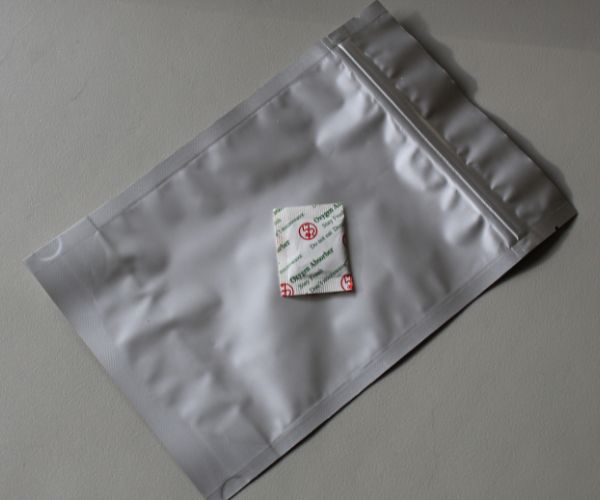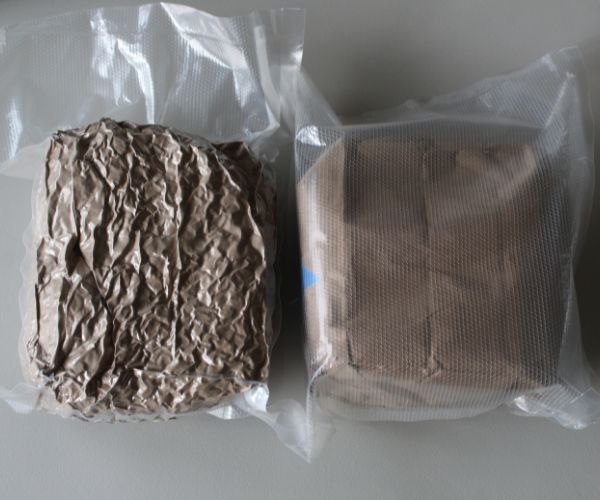As preppers, we’re constantly striving to find the most nutritional and shelf-stable foods for long-term storage, and lentils are at the top of the list.
However, as with all non-perishable goods, questions always arise as to how long lentils actually last, as well as the best way to store them.
Rest assured, with the proper equipment and correct knowledge, lentils can last up to 30+ years.
Why You Should Include Lentils in Your Longterm Storage
Not only do lentils have a naturally superb shelf life, but they’re also highly nutritious and a great source of many essential vitamins and nutrients including:
- Iron
- Calcium
- Potassium
- Magnesium
- Essential amino acids
Furthermore, they are high in protein, carbohydrates, and fiber. All of which are absolutely necessary to maintain functionality. Plus, they’re gluten-free.
They also cook quickly and easily and are a great source for flour.
Do Lentils Go Bad?
Even though lentils are “non-perishable,” like any food item, oxygen, time, moisture, and organisms all threaten their lifespan. Just like other dried goods, legumes are at risk for pests, mold, and oxidization.
In particular, oxygen feeds microbes, which eventually leads to degradation. This can cause the oils in your lentils to become rancid.
Lentils have a relatively long shelf life on their own, but if you see any signs of pests, mold, or foul odors, think twice before eating. Otherwise, feel free to eat them long after their “use by” date.
Nutritionally speaking, however, oxidization causes your food to lose its vitamin and mineral content within two to three years. This is why proper storage is paramount.
Most agree that by year five all vitamin content is completely diminished. Although, it should be noted that their carbohydrate and protein content remains intact. With proper long-term storage techniques, however, you can extend the nutritional value of your lentils up to 30+ years.
What is The Actual Shelf Life of Lentils?
Dried lentils last two to three years on your pantry shelf without any assistance at all. The “best if used by” date scares many folks, but it simply means their nutritional content is waning.
Their color, texture, and flavor may change, and they may take a little longer to cook. But, they’re still safe to eat and still provide adequate protein and carbohydrates regardless of their age.
Be warned though! Because of their phytic acid content, undercooked lentils are hard for the body to digest and can cause gastric distress. So, be sure to cook them until they’re soft and tender.
Best Ways to Store Lentils Long-Term
It’s fairly easy to extend the shelf life of lentils and for the most part, rather inexpensive. Here are some of the most popular storage options amongst preppers and homesteaders.
First, it should go without saying label everything!
1. Airtight Containers

If you’re looking to shelve your lentils for longer than a few years, choose airtight containers. Depending on your desired portion sizes, use canning jars or BPA-free buckets.
For smaller quantities, fill jars just below the rim and add around 125-150 cc of oxygen absorbers per quart.
For larger stashes, use 5-gallon BPA-free buckets, which essentially prevent chemicals from leeching into your food. Additionally, gamma seal lids are most effective in keeping oxygen out.
As with your jars, fill your bucket with lentils and add around 3000 cc of oxygen absorbers. Just remember, if you open your bucket at any point, don’t forget to add additional oxygen absorbers.
The downside to jars and 5-gallon buckets is that they’re big, bulky, and heavy. A 5-gallon bucket holds around 36 pounds of lentils. So, should you have to leave your location on foot, chances are you’ll be leaving your legumes behind.
2. Mylar Bags

On the other hand, mylar bags are an airtight option that offer several additional benefits:
- Lightweight and portable
- Durable
- Inexpensive in comparison
- Provide both oxygen and light barriers
- Have a variety of sizes
I like Wallaby’s mylar bags because they’re high quality and made specifically for preppers.
When using mylar bags, seal your oxygen absorbers inside the bag as quickly as possible. Because they absorb room air, they’ll only last 15-30 minutes otherwise.
The most efficient way to distribute your lentils into mylar bags is to:
- Fill all of your bags at once leaving adequate head space and seal them halfway.
- Drop an oxygen absorber into one bag at a time, squeezing out any excess air.
- Seal shut with your chosen sealer.
Additionally, many preppers recommend using mylar bags in conjunction with 5-gallon buckets, mason jars, or #10 cans for added security measures.
Mylar bags are also useful for bugging out. You get the oxygen-free zone in a lightweight, tear-resistant, portable package. It’s a convenient way to carry a sufficient amount of food on foot.
If you’re new to mylar bags, read our complete guide for more in-depth information.
3. #10 Can
Using #10 cans (10-pound cans) for food storage requires a bit of an investment because a can sealer is necessary. In today’s market, a quality sealer hovers between a few hundred dollars and a few thousand. But if you can afford one, they’re well worth the expense.
To use an open-top can sealer:
- Fill the can just shy of full.
- Place around 500 cc of oxygen absorbers.
- Place your lid on top of the can and mount it to your can sealer.
- Follow the directions on your can sealer to secure your lentils.
One benefit of using a can sealer is that it’s the perfect solution for a grid-down scenario because it doesn’t require power. While electric models do exist, many homesteaders and preppers are content with the hand model.
But much like your 5-gallon buckets, weight becomes cumbersome under certain conditions. On the other hand, cans offer many advantages that other air-tight containers don’t. They’re:
- More durable than glass, mylar, or BPA plastic
- Immune to light, moisture, and oxygen
- More prone to surviving floods, fires, hurricanes, and other natural disasters.
4. Rice and Bay Leaves
Many of us who grew up in the days before online shopping and mylar bags learned the value of rice and bay leaves in food preservation, and this knowledge shouldn’t be forgotten. You never know when you’ll be facing a long-term grid-down scenario, product shortages, or supply chain disruptions.
So when all of the modern technology fails, having some historical wisdom might just save the day.
Bay leaves won’t help with moisture or oxidization, but they will keep pests at bay. Likewise, rice won’t help keep the bugs out, but it will help stave off moisture.
Even with modern-day preservation techniques, many homesteaders still toss a few bay leaves in their storage items. It won’t necessarily get you thirty years, but in a pinch, it’ll do.
If you find yourself in a situation where all you have is the most primitive supplies, or if you just don’t have extra funds, rice and bay leaves will add a little longevity to your food storage.
5. Freezing
Can you freeze your lentils? Yes.
Should you? No.
If you have the space, long-term freezing is always an option. However, most homesteaders and preppers agree they’d rather use their freezer space for things requiring strict temperature control.
Furthermore, when considering long-term food storage, it’s best paired with worst-case scenarios. Many of which involve long-term power outages. For this reason, I wouldn’t recommend long-term freezer storage for anything.
Considering all these methods, most ag extensions recommend mylar bags or #10 cans. Air-tight containers retain nutritional value much longer.
However, a fully rounded food storage is not a bad idea. Utilizing multiple preservation methods ensures you have all your bases covered.
Just be sure to clearly label everything and rotate your stock faithfully in a typical first-in, first-out fashion.
Why Not Vacuum Sealing?

The main reasons vacuum sealing shouldn’t be used for long-term preservation are:
- Mylar bags block both light and oxygen much better. Both of which contribute to food degradation and loss of nutrients.
- While vacuum sealing removes oxygen around your food, it does not remove the oxygen within your food. This means microbes and infestations are still plausible.
- As noted in the picture above, it’s not uncommon for vacuum-sealed bags to take on air in a relatively short period.
- Mylar bags are more difficult for pests to chew through.
Read: Vacuum sealing vs mylar bags
That said, you can use vacuum sealing to preserve the innate shelf life of lentils. If you do, be sure to freeze them for at least 72 hours to destroy any insects that may be lingering. Vacuum sealing is not 100% oxygen free.
Afterward, leave them out until they reach room temperature before proceeding with vacuum sealing. Otherwise, too much moisture is present.
If you live in a humid area, desiccants are optional. There’s no need to use an oxygen absorber with vacuum sealing because food storage bags are semipermeable.
To reiterate, vacuum sealing should not be considered for long-term storage and should only be used if you plan on using your lentils within 12-18 months.



